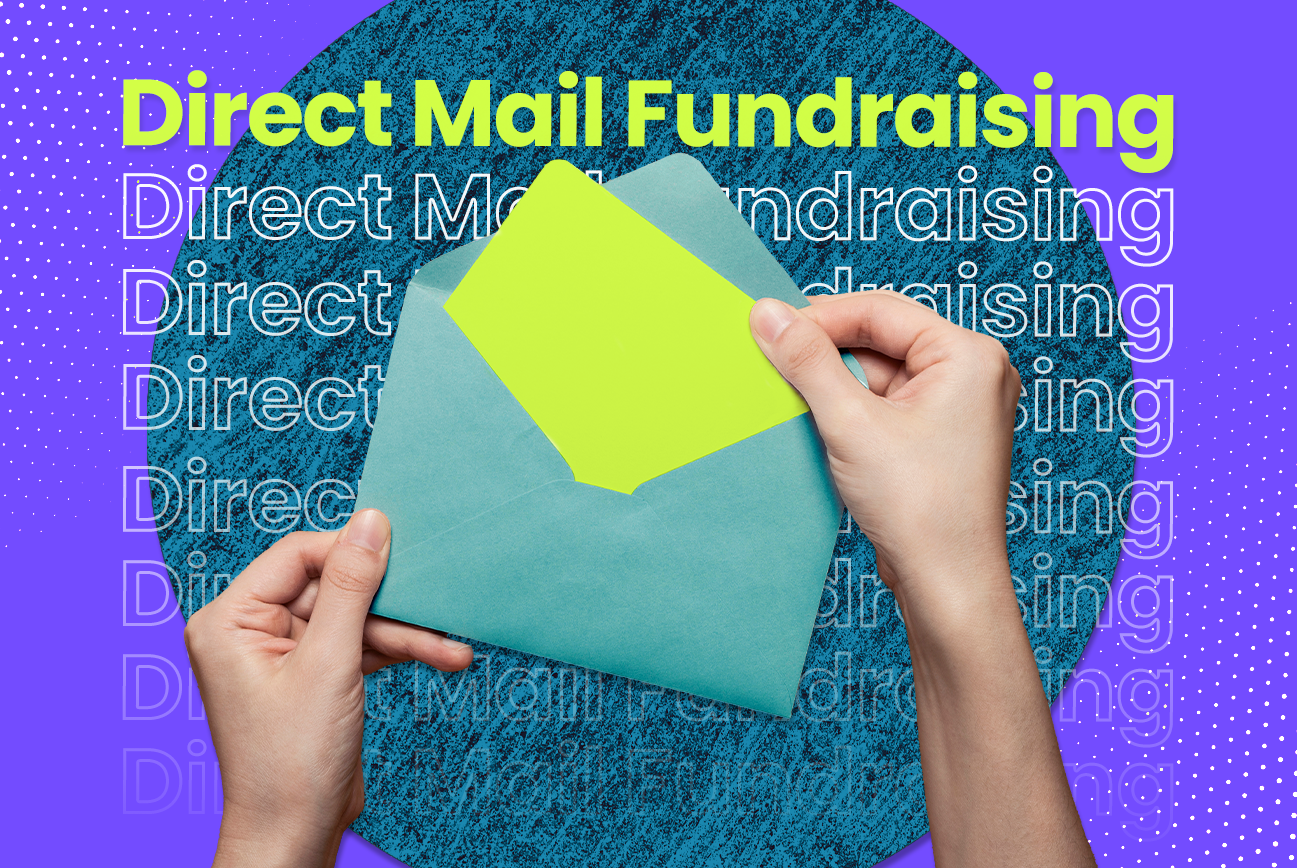Is direct mail fundraising dead? Of course not!
Yes, digital strategies dominate the conversation these days. And it’s no wonder they’re at the forefront of fundraising, considering the huge role emails, text messages, and social media play in today’s world.
It wasn’t all that long ago that nonprofit communications focused primarily on direct mail. But in today’s noisy world, a surround sound approach using cross-channel communications is the best way for fundraisers to get their message heard.
So, direct mail should still be an important part of your fundraising strategy. But you may need to look at direct mail fundraising differently to truly go surround sound.
Your appeal mailers can’t stand alone. They should work with your other communications to share a cohesive message across multiple platforms.
Like popcorn and a movie.
Direct mail and digital strategies are better when they go together. Just like milk and cookies or popcorn and a movie!
In fact, campaigns that used direct mail and at least one digital communication had a 118 percent higher response rate compared to ones using direct mail only, according to Nonprofits Source.
READ MORE: Are you going surround sound with your communications?

Direct mail drives online giving.
You might be surprised to learn that direct mail is one of the biggest drivers of online giving. But it’s true!
Donors are three times more likely to give online in response to a direct mail appeal than an email, according to GiveSmart.
Our friends in the marketing world will tell you that it can take up to eight touches to convert a new prospect. This pattern holds true in the nonprofit sector. So, it might take a few tries before you move a new prospect to the donor category.
Today, people are busier than ever. And there’s a chance someone just forgot to go back and finish making the gift after receiving your email. But direct mail fundraising is a great way to remind those donors who intended to give but got sidetracked.
Your mailer serves as a physical reminder.
They can open your appeal package, go to work, and come home, and it will still be waiting for them on the kitchen table. Even after they eat dinner, it’s still there. And now, they have time to go online and make a donation.
So, make sure the URL of your donation page is featured clearly in your direct mailer.
The reverse is true as well. Email can be a great follow-up to a direct mail piece. It’s not one or the other – it’s both!

Pieces of the puzzle.
When you launch a campaign that leverages direct mail fundraising with digital strategies, it should be clear your cross-channel communications are part of the same initiative. This gives donors a more complete and connected experience.
And that’s what we mean by surround sound! Communications across different mediums should work together to reach donors with a compelling and consistent message.
So, make it clear your appeal package and email are part of the same campaign by using a similar design and other visual elements. Donors can connect the dots when they open your appeal letter and see the same picture featured in your email.
Also, make sure the fonts, logos, images, and design themes in your appeal letters remind donors of digital messages in the campaign.
And don’t forget to keep the tone of your message and the stories you tell consistent as well.
Building on your stories throughout the communications cycle can give them more depth. For example, your initial email can start by telling a story about someone in need and explaining how your organization wants to help.
Your next few touches can use email or social media to continue building the story. And remember to explain how donations are making an impact as the story unfolds.
Then, after you hit your goal, you can share the story’s happy ending in thank you letters and emails.
READ MORE: There’s always a new story to tell.

Review your data.
Using direct mail fundraising paired with digital outreach strategies allows you to take personalization to the next level. But make sure you have a clean database before planning such a campaign.
Otherwise, you’ll need to build gradually.
Your donors may not receive every part of your message if your database’s contact information is outdated. They might receive your email, but they won’t get the direct mail follow-up if you haven’t updated their address since they moved.
Did you know, according to GiveSmart, 11 percent of Americans change their mailing address each year? If you haven’t been practicing good data hygiene, you won’t be able to count on using your direct mail fundraising to drive donations.
READ MORE: Is it time for a data audit?
Advance your personalization strategies.
Once your data is in order, you can start thinking about ways to apply the personalized approach across all channels in your campaign. Of course, you will want to address donors directly by name in your email subject line and on the outer envelope of your appeal letter.
Instead of asking donors to go online to https://mynonprofit.org/give, you can present them with a PURL featuring their name, like https://support.mynonprofit.org/JaneSmith.
PURLs bring each recipient to a website that feels as unique and relevant as your other personalized communications. When they land on the page, you can greet them by name and refer to specific programs they’ve supported in the past.
Using this approach extends the personalized experience through the entire donation process.
It helps you show your organization values your donors as individuals. It also makes it clear that you know who your donors are and that you care about more than the money they give.
PURLs can be a huge benefit to your organization. They’re an easy way to track exactly how much of your online fundraising is driven by your direct mail efforts. And you will get a better feel for which donors prefer giving in response to your direct mail pieces and which can be moved to a more digital-first approach.
READ MORE: How personalized landing pages can elevate your outreach.
The numbers don’t lie.
The average response rate for nonprofits is just 6 percent when using direct mail only but shoots up to 37 percent when using web, email, and direct mail together, according to GiveSmart.
So, you’re going to have a hard time getting a response if you’re relying on one channel to drive your fundraising efforts!
As we mentioned earlier, direct mail fundraising works best when augmented by a digital communications strategy. And you may be able to cut down on print and mailing costs by sending less direct mail to a more targeted audience. But you shouldn’t cut direct mail from your fundraising strategy altogether.
Our world becomes more digital every day. But direct mail fundraising is here to stay.
Click here to chat about your direct mail fundraising strategy with an amplifi team member!


![[amplifi] - eBook pop ups and banners _Emails (Blog) FREE eBOOK: Fantastic fundraising emails - The complete guide for nonprofits.](https://amplifinp.com/wp-content/uploads/2022/03/amplifi-eBook-pop-ups-and-banners-_Emails-Blog.png)







